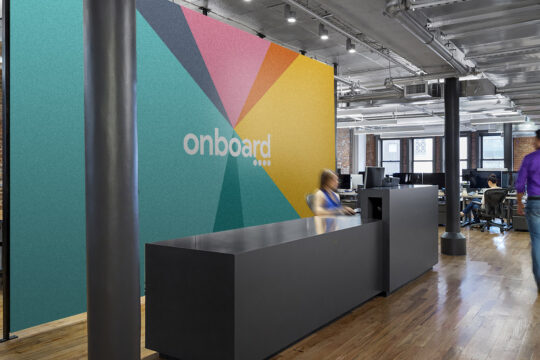Need learning at scale? Blending is your answer.
Upskilling is vital to business now more than ever. With faster cycles of technological change comes a workforce skills gap that continues to widen. For businesses to remain competitive, it is imperative that training is prioritised.
Furthermore, learning and development initiatives are key to retaining talent. When people feel like the learning curve has grown to a halt, they are more likely to start looking for opportunities elsewhere.
One way to engage employees is through blended learning.
What is blended learning?
Blended learning, as its name would suggest, mixes traditional face-to-face education with technology. It has grown in popularity amongst education institutions and for good reason. According to a study by Vanderbilt University, 77% of academic leaders suggest that online education is either the same or superior to face-to-face education and can be executed for a fraction of the cost.
Business benefits
Modernises communication
An increasing percentage of the current workforce has grown up using technology. People are more likely to communicate via email, text, or social and blended learning accommodates that.
Enables the use of EdTech
According to TechNavio, the EdTech market in North America is expected to continue growing rapidly, with a 9% CAGR forecast through 2019. This is exciting news for adopters of blended learning. More investment in the market will bring out further developments in the already-innovative space.
At present, businesses and educators can employ the use of microlearning and gamification to improve information retention and engagement. As well as AR and VR to provide an immersive learning experience.
Enhances personalisation
The National Center for Education Statistics reported that the student-to-teacher ratio has risen to nearly 30 students per teacher. In classes of this size, it can be difficult to understand individual needs and personalise lessons accordingly.
Blended learning enables institutions and businesses to provide a personalised learning experience to students and employees at a fraction of the cost and time. Placement tests or adaptive learning can be used to emphasise modules that need more work and de-emphasise modules that learners have mastered already.
More time saved
Blended learning empowers L&D teams to save time when planning out curricula. There are plenty of MOOCs and online course providers that have courses that are proven to work. This added flexibility allows L&D teams to spend more time working on other initiatives, such as mentorship programmes, or enhancing instructor-led workshops.
Learner benefits
Improved access and flexibility
The average employee only has time to devote 1% of their work week to professional development, Deloitte reports. For those who work 40 hours a week, this translates to just 4.8 minutes a day.
Blended learning affords busy, 21st century learners to supplement learning in their own time. Moving course information online increases accessibility to those who may have scheduling conflicts or work remotely. The relative ease of accessing courses on smartphones, tablets, and PCs proliferates the number of places learning can occur.
Increased satisfaction
Blended learning accommodates different types of learners better than face-to-face learning. The relative anonymity of online discussion helps to level the playing field for quieter learners.
Enhanced retention
Because modules can be accessed anytime and anywhere, supplementary learning can take place at the convenience of the learner. Having course materials outside of the classroom or seminar hall allows learners to revisit content outside of regular hours and cement the information.
For example, if learners are taking an Excel seminar at work, they can cement their knowledge by taking a corresponding online course.
This article is from TrainingJournal.com.
Optimum’s ERP training programmes are completely bespoke to each client, consisting of a blended mix of training methods. You can view our five development and five delivery methods here.






























